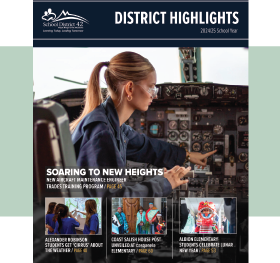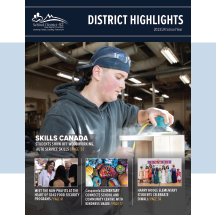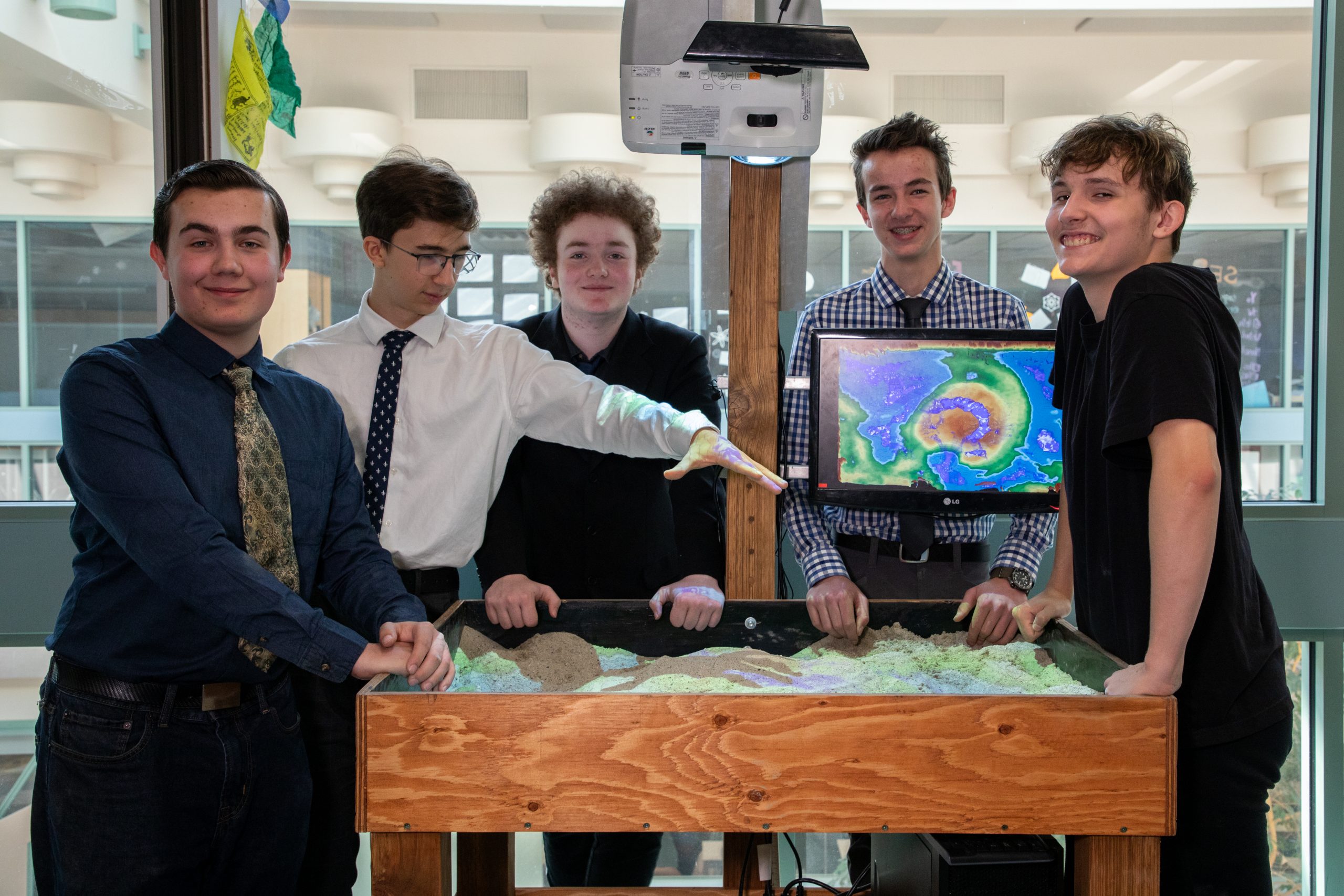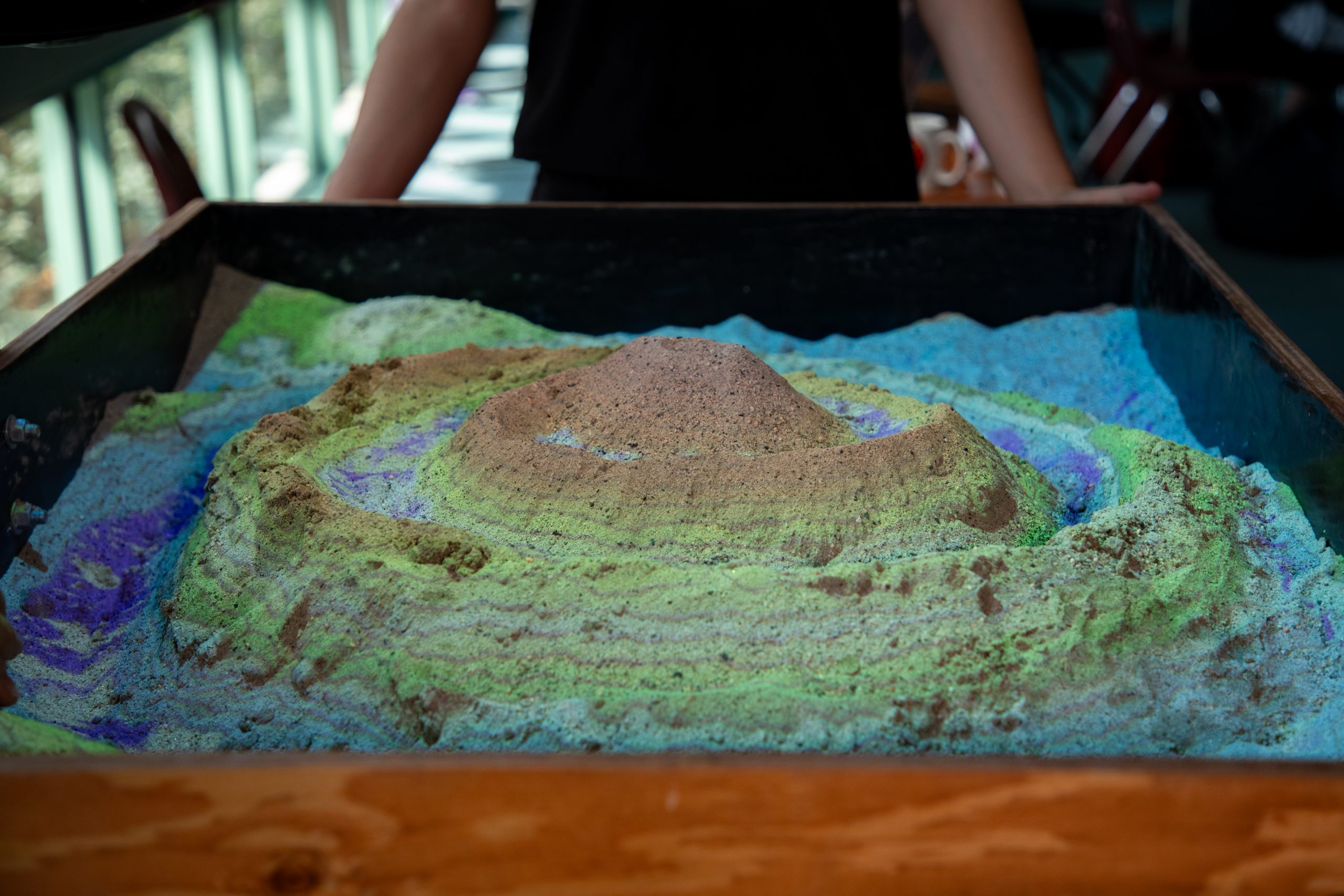It took the ThunderTech Robotics Team just one week to plan, design and build an augmented reality sandbox.
“We’re very proud of this,” said Matvey Okoneshnikov, a Grade 11 student at Thomas Haney Secondary School and one of the project leads.
The robotics team has named it the Haney Holobox. It’s made with a 3D scanner, projector, computer, monitor, wood and sand.
The Xbox 360 Kinect scans the depth of the sand and sends the information into the computer, that processes it, and displays it back onto the sand as a topographic map using the projector.
“If you make a hill in the sand, the Kinect will read the change in the topographical layout and then it will process that change through our computer, which is running Linux, and will update the projection to display a new map on top that includes the hill you created,” explained Logan Humeniuk, a Grade 9 student.
If you raise your hand above the sand, he added, it acts as a rain cloud that you can make rivers and lakes with.
The idea for the project came from the school’s metal shop teacher. He had seen one of the sandboxes at the University of British Columbia (UBC) and thought it would be a great way to teach topography.
“Mr. Page approached the ThunderTech Robotics team and asked us if we could do this,” Okoneshnikov said. “We took a look at the idea and we found a few examples online of people doing it at their schools, so, we got to work.”
The open-source AR sandbox software was created by the University of California, Davis, and is available for download online.
“So, any person can make their own version of the sandbox,” Humeniuk said, but you’ll need to build and calibrate it yourself.
Okoneshnikov, alongside project lead Daniil Batishchev, spent some time making the blueprints. Then they purchased the materials at a nearby hardware store, and with the help of Humeniuk, they assembled it.
The Haney Holobox now lives in the school’s Social Studies Great Hall, where Quinn Gigliotti, a Grade 10 student on the robotics team, keeps it running.
“We will be able to use it as a teaching tool and switch it for every teacher’s need in the school if they want to simulate floods or global warming, Gigliotti said, adding the hope is they can eventually lend it out to other schools as well.
One way to use it is to play out different scenarios and see what happens, Okoneshnikov said.
“For example, we can recreate the Fraser Valley and then see what happens when we flood it, see what parts get flooded first,” he explained. “We can use it to see how water bodies behave. We can build a dam and then break it.”
Thomas Haney Secondary’s flexible model helped bring the project to life, Gigliotti said, because it gave the team the ability to carve out the time they needed to work on the AR sandbox in between classes.
They were able to work with the woodshop teacher to cut the wood, the metal shop teacher, Chris Page, to fabricate brackets, and use the technology lab to integrate the computer components.
“What impresses me most about this project is that it was completely designed and built without the expectation of receiving any grades,” said Page. They are an amazing group of young men, to say the least.”
And the ThunderTech Robotics team is only just getting started. Their goal for next year: Build a fully functioning robot.




